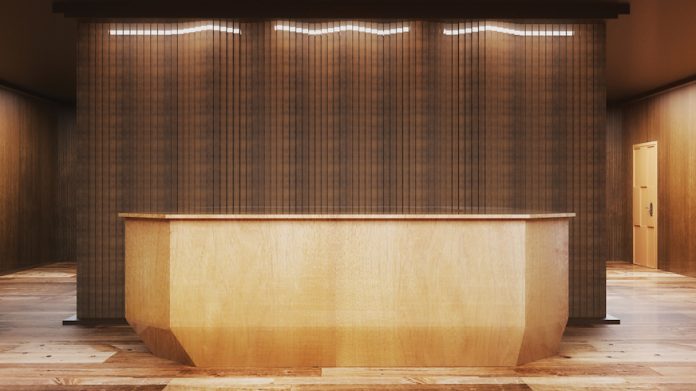Based on CBRE’s survey of monthly operating performance, U.S. hotels experienced a 58 percent decline in total hotel revenues from 2019 to 2020. This resulted in a decrease of 78 percent in profits at the gross operating profit (GOP) level, along with a 107 percent fall off in earnings before interest, taxes, depreciation, and amortization (EBITDA).
To minimize the negative impact on profits, management had no alternative but to take drastic action. In 2019, total labor costs and related expenses comprised 50.2 percent of hotel expenses through GOP. Therefore, operators naturally looked at controlling employee-related expenditures to help limit the declines in hotel profits.
During 2020, thousands of hotels let go of hourly associates and enlisted managers to fill line-level functions. At least one well-known operator released all middle managers, leaving local general managers and directors of sales and marketing to oversee a skeletal line staff.
Food and beverage offerings were scaled back dramatically, reflecting unprecedentedly low occupancies, as well as the uncertainties of how to serve patrons safely. Buffets all but disappeared. Spas closed for the most part during much of the pandemic’s duration. The use of contract/leased labor as a percentage of total payroll costs declined significantly as the need for supplemental labor fell off with the decline in overall volume.
At the same time, housekeeping tasks became more extensive in sync with enhanced sanitation and safety protocols, thus resulting in increased hours. The need for security increased as reopened hotels enforced social distancing and administered temperature checks.
To analyze changes in hotel labor costs during 2020, CBRE and Heath & Company Hospitality Advisor LLC examined the operating performance of 3,254 U.S. hotels that submitted detailed 2019 and 2020 labor expenditure data to CBRE’s annual Trends in the Hotel Industry survey. In 2020, these properties averaged 219 rooms in size, with an occupancy level of 36.3 percent and an average daily rate (ADR) of $133.41.
Cost Cuts
From 2019 to 2020, total labor and related costs declined by 51.8 percent at the hotels in the sample. Burdened with the greatest declines in revenue, along with extensive services and amenities, full-service, convention, all-suite, and resort hotels required the greatest number of employees on a per room basis. Accordingly, these properties found it more difficult to cut labor costs compared to limited-service and extended-stay properties.
The decline in total labor costs was driven mainly by the salary and wages component. During 2020, the combined expenditures for salaries and wages, bonuses and incentive payments, contract and leased employees, and service charge payouts fell 55.3 percent.
Concurrently, payroll-related expenditures (employee benefits) declined by just 35.2 percent. A large part of payroll-related expenses is fixed in nature. The health insurance premiums for retained employees and extended benefits to furloughed staff caused this portion of labor costs to rise by 33.7 percent when measured on a dollar per available room basis.
Salary and Wage Components
CBRE tracked five discrete components of salaries and wages. In 2020, the greatest percentage declines were observed in service charge payments and bonuses. This is to be expected given the falloff in revenues and profits. The percent of properties in the sample that reported bonus payments declined from 87.1 percent in 2019 to 78.5 percent in 2020. The greatest declines were reported in the F&B, admin and general, and sales and marketing departments.
Among the direct salary and wage categories, the declines were greater for non-management personnel (down 59.4 percent) compared to management (down 36 percent). Most non-management personnel are paid on an hourly basis, and are therefore more susceptible to declines in business volume. Management cuts were made, but minimum levels of management were retained to preserve reduced operations and the value of the physical facility.
Due to labor shortages and the desire to control employee benefits, the use of contract and leased labor was on the rise before 2020. However, with the decline in business volume, the need for these employees lessened, and payments made to contract/leased labor declined by 60.4 percent in 2020. This is consistent with the decline in the percent of hotels in the sample that reported contract/leased labor payments—from 56.8 percent in 2019 to 52.3 percent in 2020. The greatest decline in the use of contract/leased labor was seen in the rooms department. An interesting exception is the increase in the info and telecom systems department as properties opted to eliminate fixed staff and outsource technology-related functions.
While the incidence of bonus and incentive payments did not decline dramatically, the aggregate bonus and incentive payments did fall by nearly 80 percent in 2020.
Lessons Learned
Looking forward, operators will be challenged to maintain the depth of the staffing cuts made in 2020. Occupancy levels will rise and hotels will reopen some of the services and amenities removed in 2020 to compete and justify room rate increases, resulting in the need for more employees.
However, some lessons learned will help limit labor costs. During 2020, many employees were cross-trained to perform multiple roles. Brands may eliminate services and amenities that guests no longer value. More hotels rolled out technology that expedites the guest registration process. All these factors should help contain the inevitable rise in labor expenditures.











